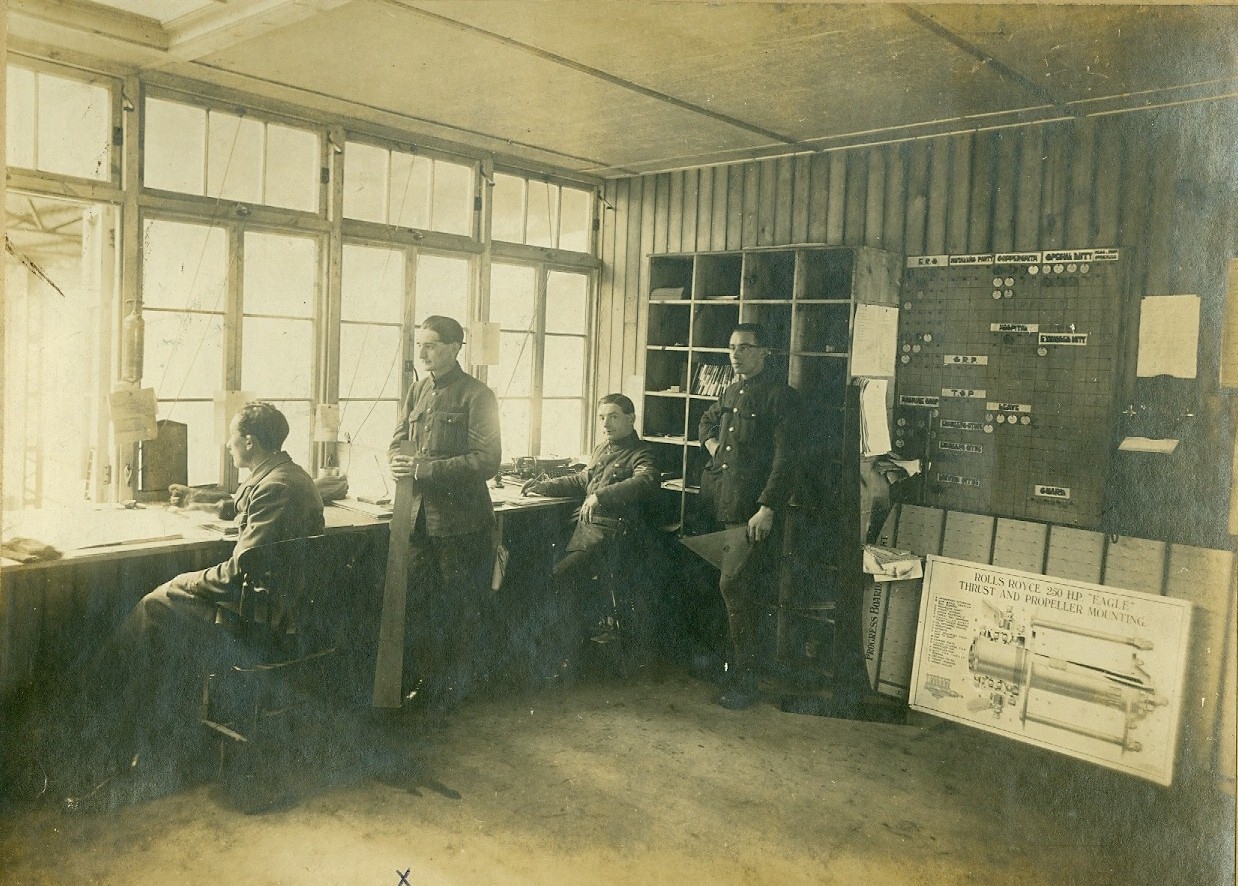
Arthur Roberts on the Shore Base of HMS Campania"
Donibristle, Fife
1916
This this article for some information on electrical installations at three Buckley collieries
Re: Arthur Rowlands mentioned below - see hot spots and reminiscences in his name
Arthur Roberts
Doreen Aston
February 2012
My name is Doreen Aston (née Roberts). My father, Arthur Roberts, was born on 18th March 1898, in Johnstown, near Wrexham. He was the eldest of three brothers - Arthur, Percy and Jack. Their parents were Chris (short for Christmas) and Sarah. Chris was a terracotta modeller in the clay industry.
When the children were small, the family moved to live in Ariclar Cottage, Drury Lane, Buckley, but prior to this they had spent time living in Wordsley, Staffordshire. Later still the family moved to 46 Church Road (the road has since been re-numbered). This was my father's home for the rest of his life, as when he married my mother (formerly Annie Jane Parry, of Mold), they lived there with my grandparents.
The two younger brothers, Percy and Jack, emigrated to live in New Zealand in 1925. They joined an uncle and aunt who lived in Wellington, and later, my grandparents joined them there, leaving in 1927.
I was born at 46 Church Road on 9th July 1926.
No 46 was one of three cottages which had been converted from the original Horse and Jockey public house. This must have been a sizeable building, because although No 50 was quite small, Nos 46 and 48 were of a decent size. Later, another cottage was built, adjoining No 46 on the south side (No 44), and later still a shop was built on the other side (the shop was built by a Mr Rowlett, who lived at Aigberth Villa). The shop fronted Church Road, and is still in existence today. In the 1940s, all the properties (excluding the shop) were purchased by my father.
Arthur Roberts and his brothers attended St Matthew's church school, and on leaving school Arthur trained as a draughtsman/electrical engineer at Brookhirst Engineering, Chester.
In 1916, aged eighteen, he joined the Royal Naval Flying Corps, and was sent to Donnybristle on the Firth of Forth to join the HMS Campania, a former Cunard cruise ship which had been converted to an early form of aircraft carrier. At first Arthur was shore-based, and I have been given to understand that he was part of the team which developed the mechanism which 'caught' the aircraft (bi-planes at that time) as they landed. I also know that he was at sea on the Campania, and that whilst the ship was in Scapa Flow, it was ordered to take part in the Battle of Jutland. However, German submarines were detected at the entrance to Scapa Flow and so the Campania was ordered not to sail.
In 1918 HMS Campania was anchored in the Firth of Forth, along with other vessels, when a sudden squall blew up, causing her anchor to drift. Thus the vessel collided with others, causing so much damage to herself that she sank, pitching the crew (my father amongst them) into the water. He was rescued, but for some reason which never became clear to me (he never spoke of the experience), he was subsequently profoundly deaf in both ears.
Apparently the Royal Naval Air Service then became part of the RAF, from which my father was demobilised.
I believe that he was subsequently employed in the Bangor region, but know also that in the early 1920s he was part of the team which installed electricity in the Mountain Lane, Elm and Bannel collieries in Buckley.
I have in my possession a mantel clock which was presented to Arthur on the occasion of his marriage. It bears a brass plaque which reads 'Presented to Mr Arthur Roberts on the occasion of his marriage by the Engineering Department, Buckley Collieries. 25th September 1925'.
Some time later, he opened the shop mentioned before as an electrical contracting business. He also sold a range of the electrical goods which were available at the time. He also 'charged' electrical accumulators, which were needed to run wireless sets at that time: 3d for a small one and 6d for a large one!
I remember that my mother would pop across the yard to serve customers, whilst my father was out wiring houses.
Whilst carrying on with the business, he took on an apprentice, Mr Arthur Rowlands, who later ran his own electrical contracting business in Buckley.
Upon the outbreak of the second World War, business was slow, so, since Vickers Armstrong at Broughton were recruiting trained electricians to work on the wiring of Wellington bombers, Arthur took a position with them, and remained in the employ of succeeding aircraft makers, until shortly before his death in January 1961.
All my memories of him are happy ones, and I understand that he was well-liked by friends, neighbours and those with whom he worked.
Author: Aston, Doreen
Tags
Year = 1916
Building = Military
Gender = Male
People = Group
Work = Military
Extra = Military
Extra = WW1
Extra = 1910s
Copyright © 2015 The Buckley Society
